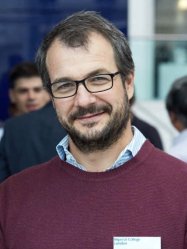Overview
Guillermo's research is centred on heat transfer, combustion and fire science. The purpose of his work is to reduce the worldwide burden of accidental fires and protect people, their property, and the environment. In doing so, he solves fire problems and threats to the environmental, energy resources and infrastructure. He has been especially successful at solving multidisciplinary problems combining experimental and computational methods.
Guillermo has developed computational and experimental expertise in quantifying the heat transfer and chemistry mechanisms involved in the ignition of polymers and also how timber behaves in fire. This is also related to flame retardants, a large worldwide market.
He is known in the building sector for changing the way UK fire engineers design modern infrastructure. He pioneered the design concept of travelling fires, a novel way to account for the fact that fires in buildings spread and do not burn uniformly over large enclosures, as traditionally assumed. The resulting design methodology has been applied by Arup, Buro Happold and AECOM on more than 39 iconic UK buildings (e.g. Battersea Power Plant, or New Ludgate). It is currently being discussed for inclusion in building design codes by BSi, ISO, Eurocodes and SFPE.
Guillermo's research identified smouldering combustion as the driver of peat megafires, like those causing haze in South East Asia. He shows that these are the largest fires on Earth. They destroy essential peatland and soil ecosystems and release annually 15% of global greenhouse gas emissions (as much as the worldwide fleet of road vehicles). It is an emerging research topic related to climate change and pollution. The work of Guillermo in this area has yielded new fundamental knowledge on heat and mass transfer in reactive porous media, and developed innovative computational models. See here a short interview summarizing the topic.

